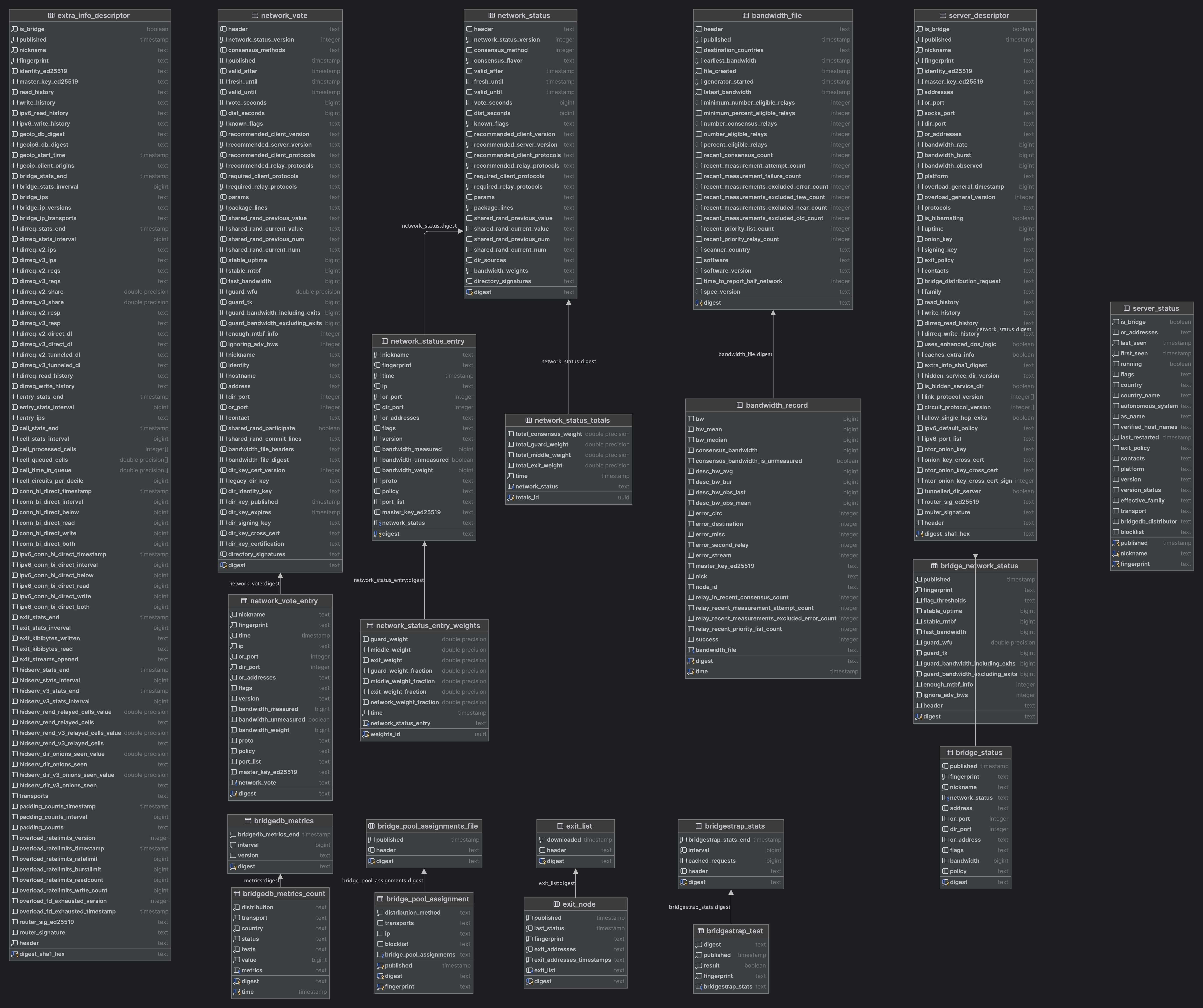GSoC 2023: Week 3
Hey there! This has been yet another reading code week, again :) but bear with me a little longer.
If you read the previous articles you already know that coding should start on the 29th of May, before that date you should spend time bonding with the community and other people participating in GSoC 2023.
I did write some more (very little) filtering logic for query params that might come with each request, you can find all those in the onionoo protocol specifications. Later this week I’m also going to setup an initial CI/CD pipeline to automatically test code when commits are pushed to any remote branch so that I’m sure I’m not pushing broken stuff.
Plus, I’ve also started to lay down another crucial thing that I talked about last week: responses → table columns mappings.
Right now the Network Status Team is loading data into their databases and we’re going to have access to the new instance next week as the issue is getting noticed and is moving forward.
I had to write down where data is to be queried and how, because there were some mismatches in responses field names and table columns. A first attempt to illustrate the mappings is provided in this issue and is now being discussed with other community members.
This docs will be necessary when I’ll have to actually query the databases to contruct the responses that the service returns. I still don’t have access to pg as you know, but I can replicate a mirrored instance locally with docker since I have the entire database schema at my disposal, and you have too of course.
This is how the database currently looks (full image)

Things are going smoothly for the moment, the project is almost 100% setup and soon I’ll start to code the APIs. I’ve now participated in more than two weekly meetings and I’m starting to understand more of how the Tor Project community operates and I’m happy to be part of it.
See you next week for more updates!